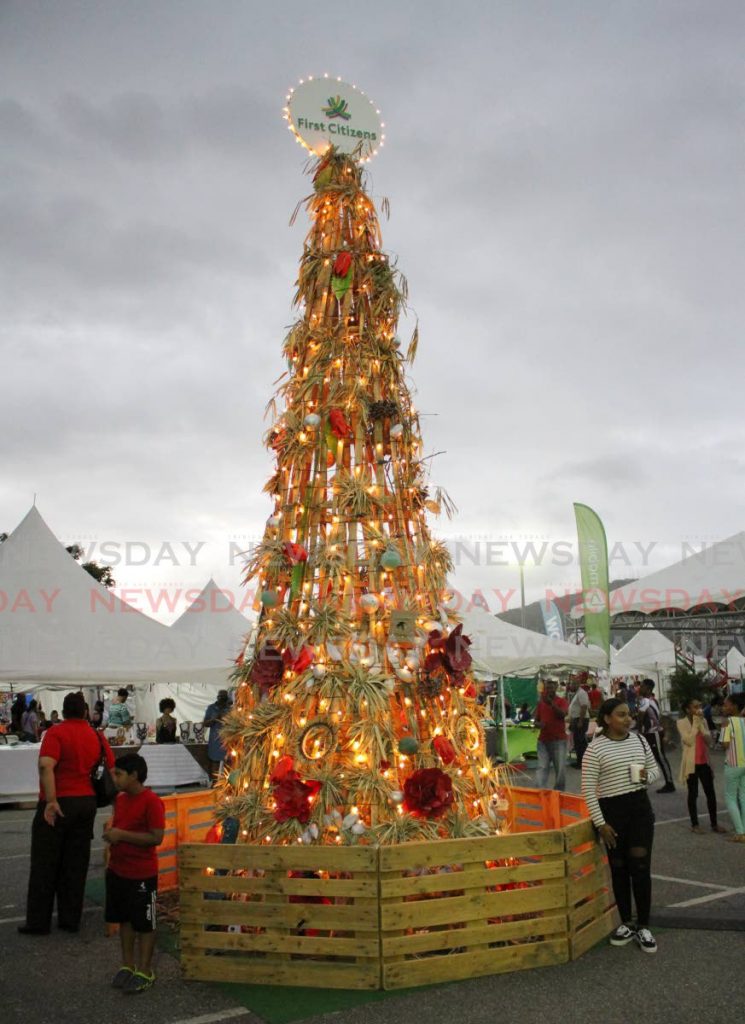Wrapping up

It’s a kind and brilliant day as I sit to write this. The weather is overcast and positive. This is not the smog of Mumbai or London. The overcasting is legitimate, nature’s gift of rain clouds, in a sense scooping emotions together, making sandcastles of them the way we make them at the beach, patting the wet sand, tight into a dream structure. It is the kind of day we should be thankful for in Trinidad.
And in this space, I dream bamboo. I was awakened earlier in the week by the thought that bamboo has been an important part of Asian cultures particularly in a ritual form, and African arts.
I think there is value in our dreams, if only to point us in the direction of the things that preoccupy our subconscious mind. We all find common ground in the natural world.
While we fight to create awareness about the dangers of climate change, to make people more mindful of the legacy that they are leaving for their children, for the future, there is an artistic movement that has always been aware of reuse, recycle.
Established as a dojo where martial arts are taught, among which stickfighting is also included, the Bois Academy in Barataria also houses the workshop of Turunesh Raymond, an Ethiopian-born, European-educated artist best known for her papier mâché work.
The high ceilings and warehouse-style structure provide an energy of largeness, the kind of largeness that is still too small to hold the number of ideas that the physical structure contains. Broken vases, glasses, repaired and made into pieces of art, using papier mâché lie at different points in the room. Some, discarded because of cracks and missing parts, now have a renewed life.
This is a tropical Santa’s workshop in a sense, a grand display of what creative thought can do if we focus on utility and conservation.
With Raymond, the Philosophical Society of TT also finds residence in this space, where the energy of open space, presided over by paintings and masks, creates a sanctuary of sorts for ideas to soar and materialise.
Raymond’s artwork, predominantly African motifs, draws on all the cultures to which she is exposed, from European to African. Yet, they feel folk in nature, where the folk speaks to the beauty within imperfection.
Through the utterance of "folk" we think, tribal, we think rootsy, we think creative expressions of the people, we think elements – air, water, earth, fire – material fashioned for us out of them by nature. We think the inherent creativity present in everyone. And this is an everyone space, a space that is open to all cultures to express themselves and engage with each other through art, music, martial arts and ideas.
With the drive towards increasing environmental awareness around the world, many nations are making the move towards implementing measures that recognise our collective responsibility towards environmental sustainability. Climate-change debates seek to lead us towards adjusting the way we think of our space and the natural world. This thrust towards sustainable living finds a space this Christmas season.
The Christmas Village at the Queen’s Park Savannah this year showcased a Christmas tree made from recycled and natural material. A collaborative venture by Raymond and Andrew Waldron, a bamboo artist of Guyanese origin, the project brought the skills of both artists into a Caribbean rendition that says, "We’ve always done this. Sustainability is no new concept." The only difference is that sustainability is now big business.
Commissioned by the Ministry of Community Development, Culture and the Arts and financed by First Citizens Bank, the all-local Christmas tree was the centrepiece of the village, an appropriate motif that encapsulated not only the ritual nature of Christmas but also played on our Carnival culture of re-imagining traditions.
Sorrel, cuatros, poinsettias made from recycled plastic, papier mâché and ply formed decorations. Meant to disintegrate eventually, in a sense they play on the spirit of the season, death and resurrection, Christmas as tradition but also that tradition is also personal and can be adjusted and re-envisioned to suit the times.
Most importantly, the season is one of gift-giving. And one of the most important gifts that people deem significant is inheritance. In what seems like the chaos of modernity, to create by hand, tapping into the creative possibilities of natural material, is a way of slowing down, of getting in touch with our senses and becoming aware of our individual responsibility towards the environment. While families think financial and material, such eco-ventures, as small as they may be, give us another way of thinking past traditional ideas of inheritance. Material wealth will after all have no significance if there isn’t a physical world in which to contain it.



Comments
"Wrapping up"